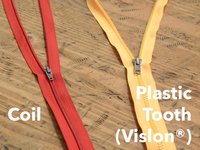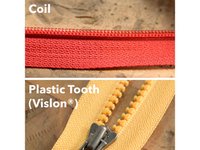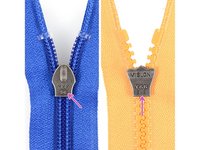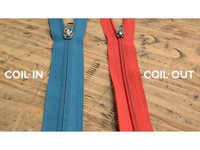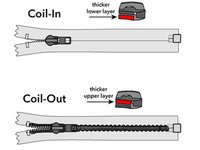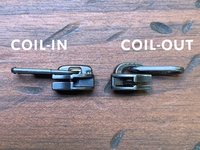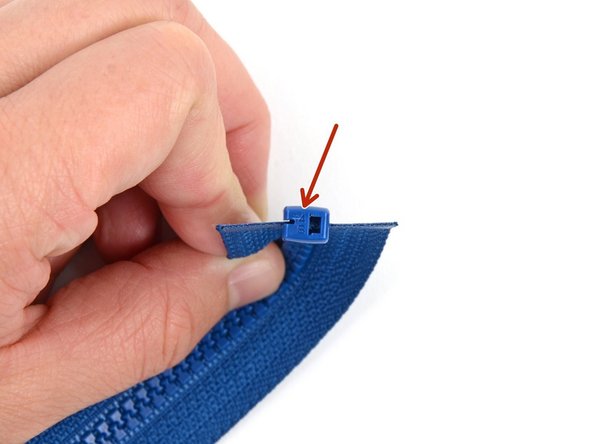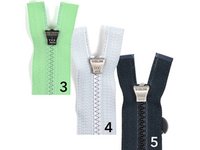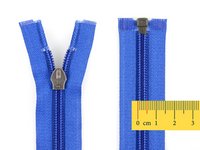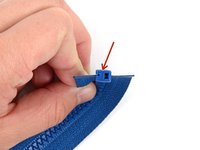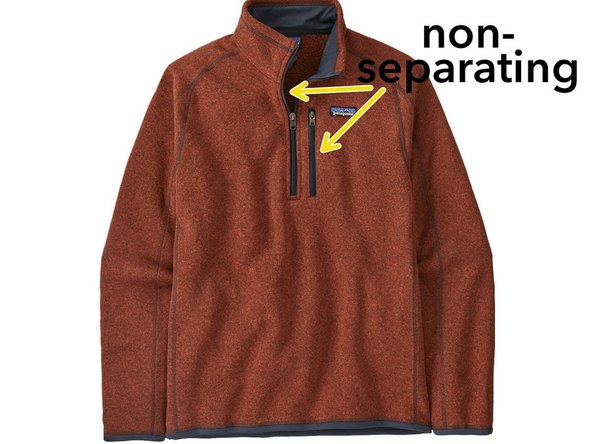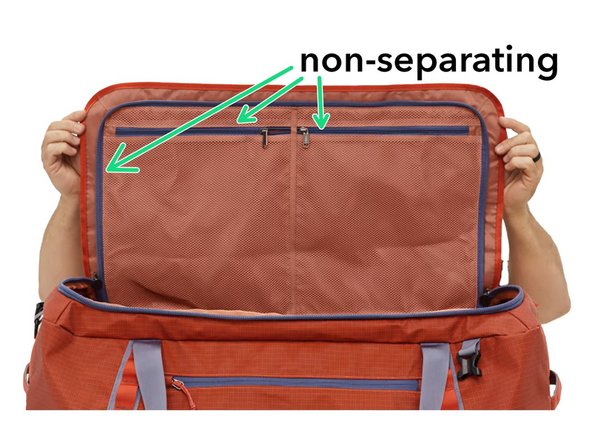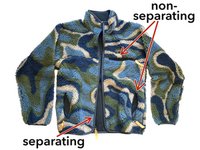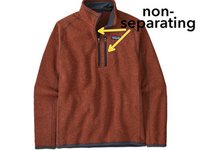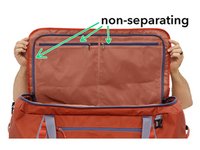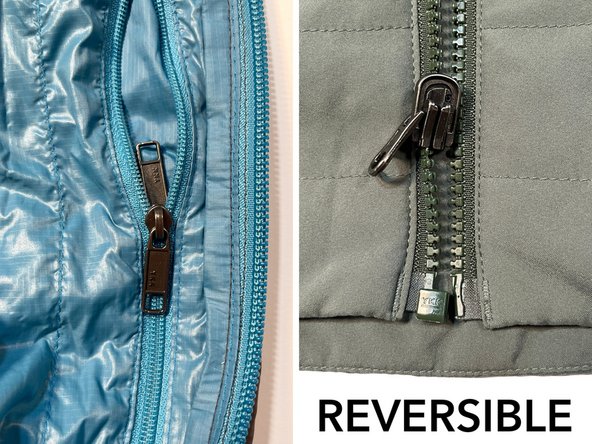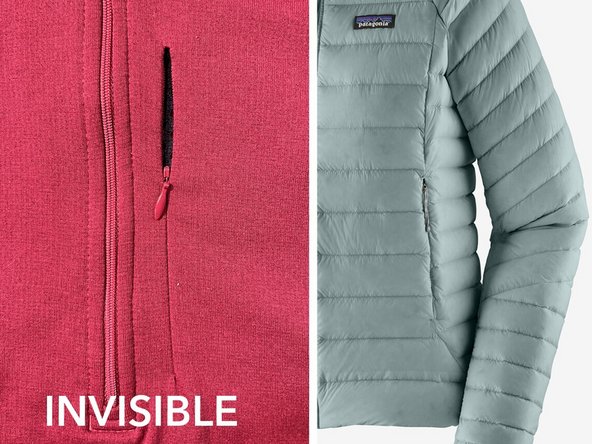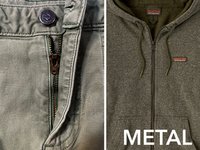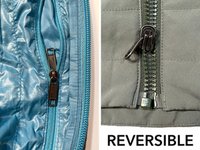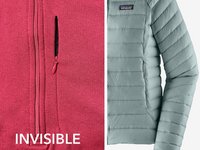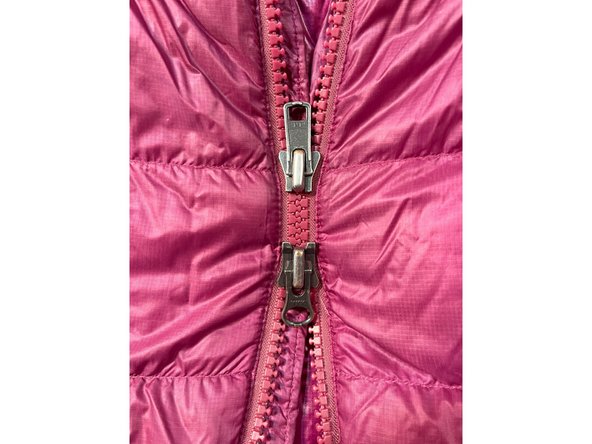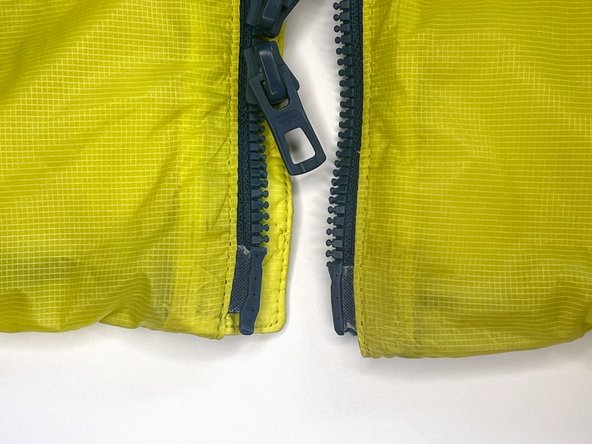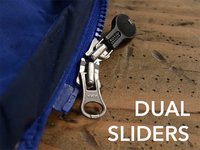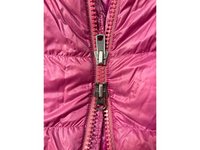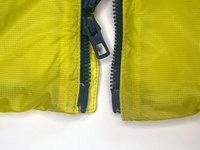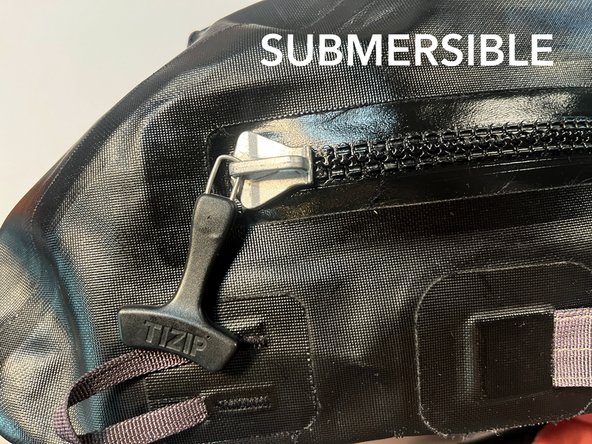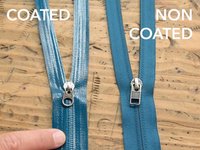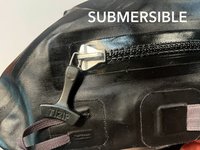
Zipper Identification
Inleiding
Ga naar stap 1This guide breaks down different zipper qualities and how to identify a zipper type. This is a very important first step in repairing a damaged zipper because different types of zippers experience different issues and have different repair solutions.
This guide will also show how to identify a zipper slider so that an appropriate replacement slider can be chosen for a slider repair.
The 3 Stages of Patagonia Zipper Repair
- Identify the zipper type
- Zipper Identification
- Diagnose the issue
- Repair the zipper
-
-
There are four main categories for zipper identification:
-
Tooth Type - What the tooth looks like and what it's made out of
-
Size - The size of the teeth (which also determines the size of the slider)
-
Separating - Whether the zipper disconnects at the bottom
-
Locking - Whether the slider has a locking mechanism that keeps it from sliding down the tape
-
Steps 3 - 7 go into more detail on these categories and Steps 8 - 10 outline some additional qualities (metal, reversible, invisible, dual, water-resistant, and waterproof).
-
-
-
There are two main tooth types: coil and plastic tooth (also called Vislon®).
-
Coil zippers have teeth that are part of a continuous nylon coil that sits at the edge of the zipper tape.
-
Plastic tooth (Vislon®) zippers have individual teeth made of plastic that are clamped onto the edge of the zipper tape.
-
The slider is often marked on the backside with a C for coil and V for plastic tooth (Vislon®).
-
-
-
On a coil zipper, the coil can lay on the inside or the outside of the zipper tape. This further categorizes this zipper type into coil-in and coil-out.
-
Coil-in zippers have the coil on the inside of the zipper tape so it's not visible from the outside when worn (sometimes referred to as "reverse coil").
-
Coil-out zippers have the coil on the outside of the zipper tape so it's visible from the outside when worn.
-
Coil-in and coil-out sliders have different slot orientation to accommodate the side of the tape on which the coil sits.
-
-
-
-
The most common jacket zipper sizes are 3, 4, 45, and 5. These numbers are based on the approximate width of the closed zipper teeth in millimeters, so increasing numbers correspond with increasing size.
-
The size is the first number on the back of the slider (reference image #2). Sometimes the size is also also on the the zipper box (reference image #3).
-
If there's no identifying number (or the slider is missing) measure the width of the closed zipper teeth in millimeters.
-
Size 3 ~ 3 mm, Size 4 ~ 4 mm, Size 45 ~ 4.5 mm, Size 5 ~ 5 mm
-
-
-
Separating zippers disconnect at the bottom and are fastened by putting the pin into the box and then pulling up the slider.
-
Center front zippers on jackets are separating zippers.
-
Non-separating zippers are connected at the bottom and are fastened by pulling the slider.
-
Non-separating zippers can be closed at the top (such as a pocket or backpack zipper) or open at the top (such as a pants fly or pullover zipper).
-
-
-
While tooth type, size, and separation apply to the entire zipper, the locking attribute applies just to the slider. A locking slider has a mechanism that keeps it from sliding down the closed tape.
-
Locking sliders have a pin that sticks into the zipper tape that's disengaged by pulling the tab. This mechanism is visible inside the slider crown.
-
Non-locking sliders don't have this mechanism.
-
In practice, a locking zipper won't move when there's tension on the zipper and they're often found on center front zipper lines.
-
As a general rule, non-locking zippers are on coated/waterproof zippers and pocket zippers.
-
-
-
There are some additional categories of zippers on Patagonia items:
-
Metal zippers have metal teeth and require associated sliders.
-
Reversible zippers can be used inside-out and have a slider with a pull on both sides or a pull that can move from one side to the other.
-
Invisible zippers are designed so the teeth and tape are concealed and only the pull tab is visible from the outside. These zippers are difficult to repair.
-
Plastic sliders are on some items instead of the standard metal.
-
-
-
Dual zippers (also referred to as two-way zippers) have two sliders:
-
One that unzips from the top
-
One that's oriented upside down and unzips from the bottom
-
Importantly, these zippers don't have a zipper box (reference image #3).
-
-
-
Coated zippers are coated with TPU so that the tape is water‑resistant.
-
Submersible zippers are fully waterproof and are designed to retain water-tightness when dunked under water. Most often, this technical function can't be maintained in repair.
-








